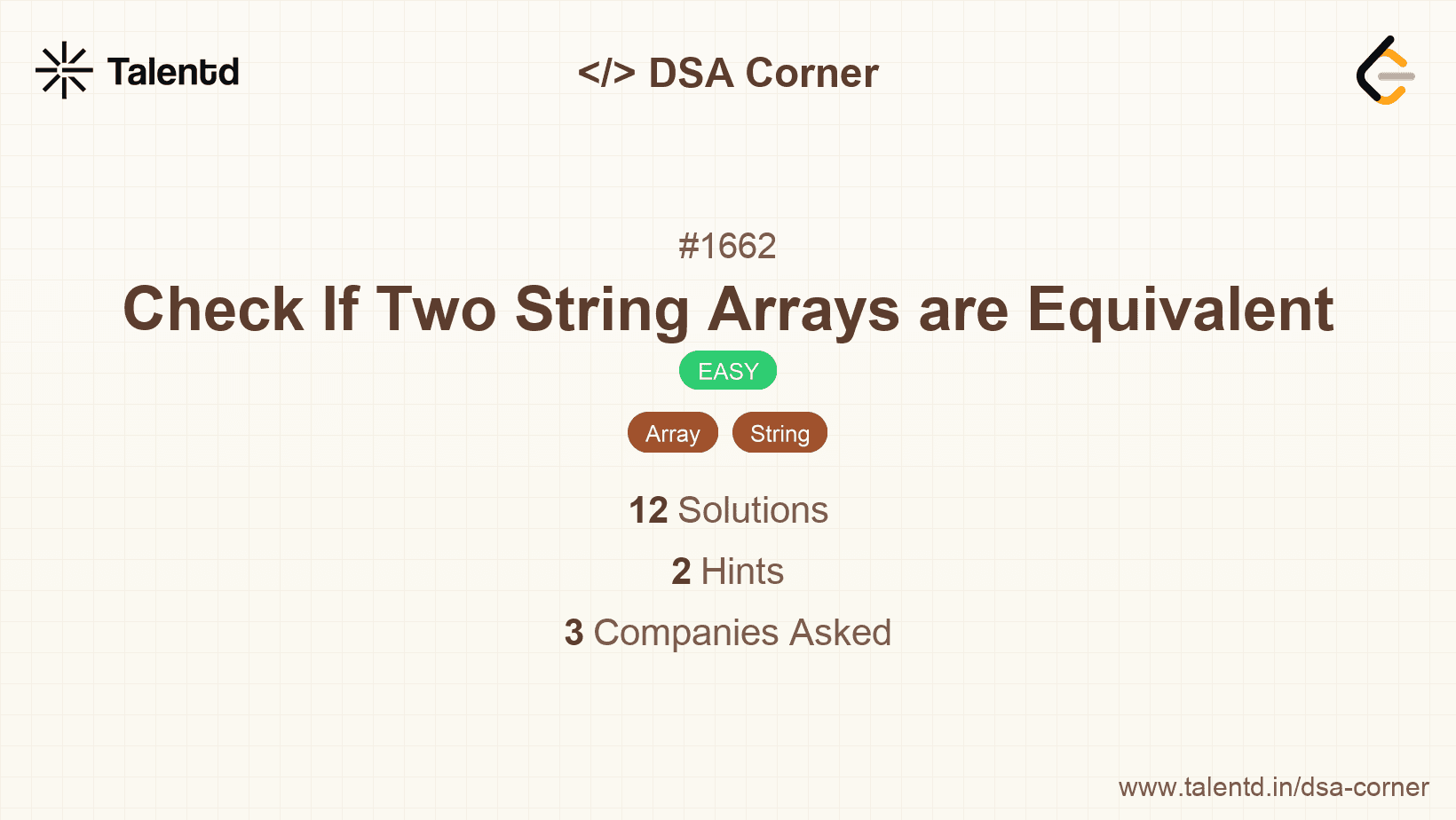
Sponsored
This approach involves concatenating all the elements in each string array to form two complete strings, and then comparing these strings for equality. Since we need to ensure that the concatenated results of the two arrays are the same, this approach is both intuitive and straightforward.
The time complexity is O(n), where n is the sum of the lengths of both arrays' strings, as each character is traversed once during concatenation. The space complexity is O(n) due to the storage of the concatenated strings.
1using System;
2
3public class Solution {
4 public static bool ArrayStringsAreEqual(string[] word1, string[] word2) {
5 string s1 = string.Concat(word1);
6 string s2 = string.Concat(word2);
7 return s1 == s2;
8 }
9
10 public static void Main(string[] args) {
11 string[] word1 = {"abc", "d", "defg"};
12 string[] word2 = {"abcddefg"};
13 Console.WriteLine(ArrayStringsAreEqual(word1, word2));
14 }
15}The C# code utilizes the string.Concat function, which simplifies the string concatenation process compared to a loop. The concatenated results are then compared for equality.
Instead of explicitly concatenating the arrays into strings, this approach uses two pointers to iterate through the characters of the arrays simultaneously. It allows checking one character at a time across both arrays, ensuring they match without creating additional strings.
Time complexity is O(n), where n is the total number of characters in both arrays. Space complexity is minimized to O(1) as no additional storage is required beyond basic variables.
Within Python, the two-pointer technique efficiently traverses both arrays in tandem, avoiding intermediate string operations while maintaining fidelity in comparison.